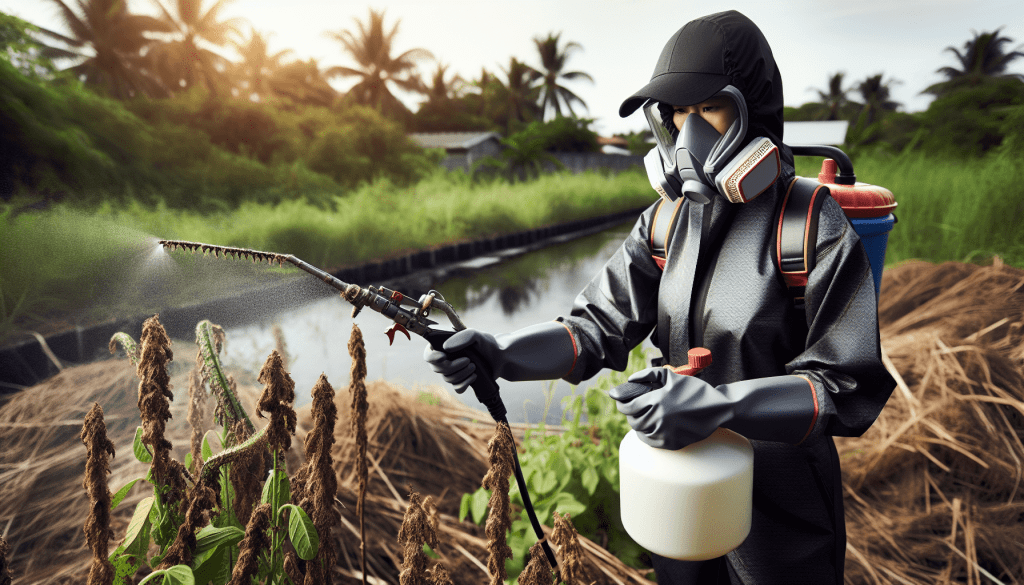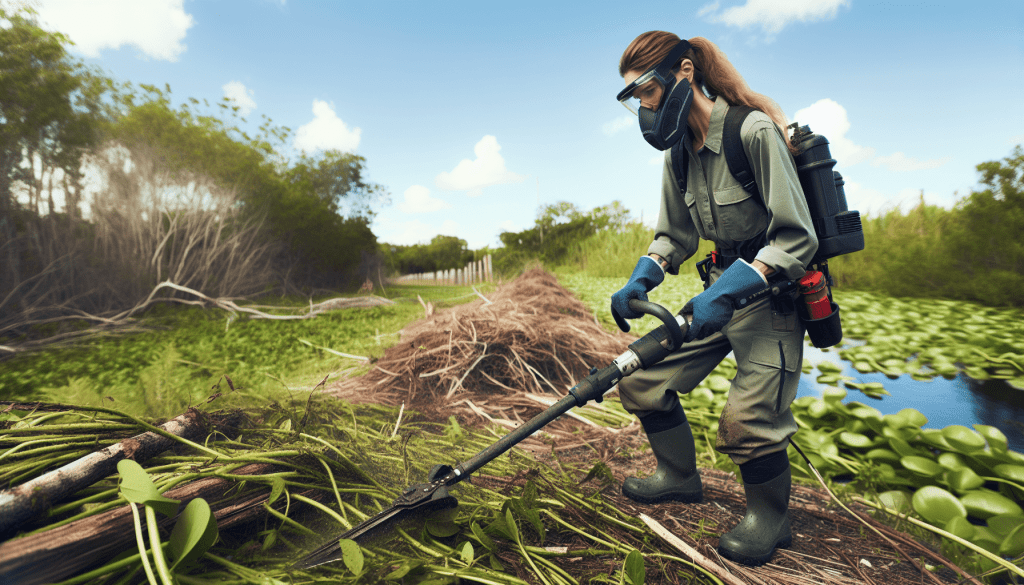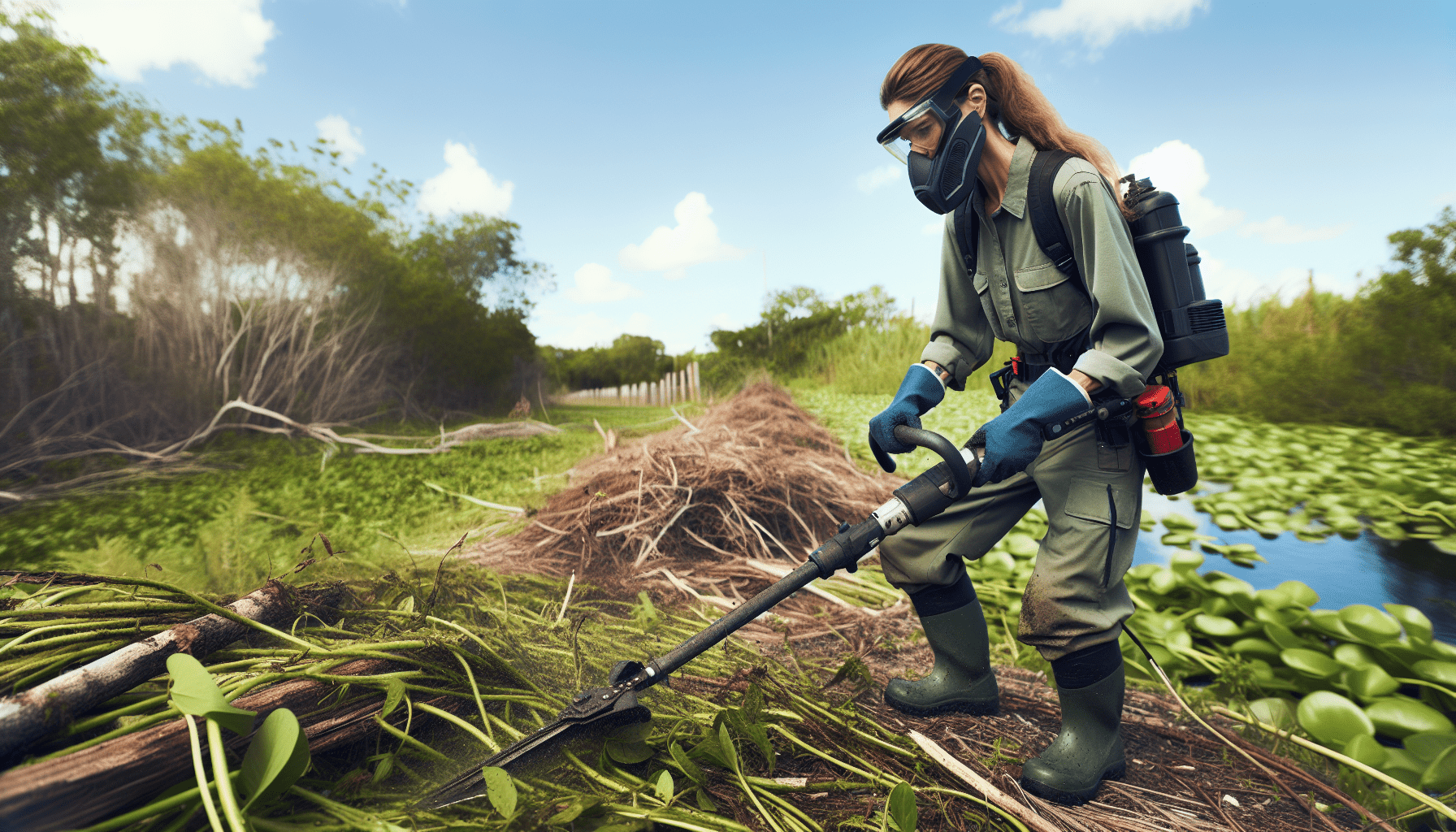Welcome to an in-depth look at the most popular alligator weed control methods used by professionals. If you’ve been battling this invasive plant in your garden or on your property, you’ll find this article extremely helpful. We’re diving into the top strategies that experts swear by to manage and eliminate alligator weed. From mechanical removal to chemical treatments and biological controls, you’ll gain insight into effective methods that can turn the tide in your favor. By the end of this read, you’ll be equipped with practical knowledge to tackle alligator weed like a pro!
Most Popular Alligator Weed Control Methods Used By Professionals
Have you ever wondered how professionals manage to control the pesky and invasive Alligator Weed? If you have a garden or are involved in environmental management, knowing effective weed control methods can be invaluable. Alligator Weed is known for being one of the toughest aquatic and semi-aquatic weeds to control due to its aggressive growth and resilience. But don’t worry! In this friendly guide, we’ll explore the most popular Alligator Weed control methods that professionals utilize.
Understanding Alligator Weed
Before diving into the control methods, it’s essential to understand the nature of Alligator Weed. This will give you insight into why it can be so challenging to manage and why certain methods are more effective than others.
What is Alligator Weed?
Alligator Weed (Alternanthera philoxeroides) is a perennial invasive plant that thrives in both aquatic and terrestrial environments. It originates from South America but has now spread to many parts of the world. Its invasive nature poses significant threats to local ecosystems, agriculture, and water management systems.
Why is Alligator Weed Problematic?
The primary reason Alligator Weed is problematic is its rapid growth and high adaptability. It can easily take over ponds, lakes, streams, and even land areas, outcompeting native plants and disrupting ecosystems. Additionally, it forms dense mats that can block waterways, impede drainage, and even harbor pests.
Manual Control Methods
Manual control involves physically removing the weeds. This method is often labor-intensive but can be effective, especially for smaller infestations or when combined with other methods.
Hand Pulling
Hand pulling is one of the simplest yet most laborious methods of controlling Alligator Weed. It involves manually removing the weed, ensuring that the roots are entirely pulled out to prevent regrowth. This method is usually effective for small infestations.
Benefits of Hand Pulling
- Immediate results
- Environmentally friendly
- No chemicals involved
Drawbacks of Hand Pulling
- Labor-intensive
- Not effective for large infestations
- Risk of regrowth if roots are left behind
Professional Tips for Hand Pulling
While hand pulling can be straightforward, professionals have a few tricks up their sleeves to make the process more effective. Here are some tips:
- Moist Soil: It’s easier to pull out the roots if the soil is moist. Consider pulling weeds after a rain or after watering the area.
- Use Tools: Specialized tools like weed pullers or trowels can make the job easier and more effective.
- Dispose Properly: Always dispose of the pulled weeds carefully to prevent them from re-rooting or spreading.

Mechanical Control Methods
Mechanical control involves using machinery to manage Alligator Weed. This method is often employed for larger infestations where manual control is impractical.
Mowing
Mowing involves using a mower to cut the Alligator Weed down to ground level. This method helps to manage the weed’s growth but often needs to be repeated frequently, as it doesn’t address the root systems.
Benefits of Mowing
- Quick for large areas
- Reduces weed biomass
Drawbacks of Mowing
- Temporary solution
- Not effective for aquatic infestations
- Can spread the weed if not carefully managed
Cutting and Dredging
Cutting and dredging are mechanical methods often used in aquatic environments. These methods involve cutting the weeds below the water surface and removing them from the water body to prevent regrowth.
Benefits of Cutting and Dredging
- Effective in aquatic environments
- Removes biomass from water bodies, improving water quality
Drawbacks of Cutting and Dredging
- Expensive
- Labor-intensive
- Requires specialized equipment
Professional Tips for Mechanical Control
Mechanical control can be more efficient when combined with other methods. Here are some professional tips:
- Combine with Chemicals: After cutting or mowing, apply appropriate herbicides to prevent regrowth.
- Regular Maintenance: Frequent mowing or cutting can eventually weaken the weed’s root system.
- Proper Disposal: Ensure all cut material is removed and disposed of correctly to prevent spreading.
Chemical Control Methods
Chemical control involves using herbicides to manage Alligator Weed. This method can be highly effective but requires careful application to avoid damaging non-target plants and ecosystems.
Herbicides
Several herbicides are specifically formulated to manage Alligator Weed. These chemicals target the weed’s root system, providing long-term control.
Benefits of Herbicides
- Highly effective
- Long-lasting
- Suitable for large infestations
Drawbacks of Herbicides
- Environmental concerns
- Potential harm to non-target plants
- Requires precise application
Types of Herbicides Used
Professionals use a variety of herbicides to control Alligator Weed, each with its own advantages and limitations. Here are some of the most commonly used types:
| Herbicide Type | Target | Application Method | Notes |
|---|---|---|---|
| Glyphosate | Broad-spectrum systemic | Foliar spray | Requires careful application to avoid non-target damage. |
| Imazapyr | Aquatic and terrestrial | Foliar spray/Injection | Effective for both aquatic and terrestrial environments. |
| 2,4-D | Selective | Foliar spray | Less impact on grasses, can be used in mixed plant communities. |
Professional Tips for Chemical Control
Using herbicides effectively and safely requires professional know-how. Here are some tips:
- Correct Dosage: Always follow label instructions for dosage and application methods.
- Protect Non-target Plants: Use shielded sprayers or apply on calm days to avoid drift.
- Integrated Approach: Consider combining chemical control with other methods for more sustainable management.

Biological Control Methods
Biological control involves using natural enemies to manage Alligator Weed. This method is eco-friendly and sustainable but can be unpredictable and slow to show results.
Insects
Several insect species have been identified as effective biological control agents for Alligator Weed. These insects feed on the weed, reducing its growth and spread.
Benefits of Insects
- Environmentally friendly
- Sustainable
- Low maintenance once established
Drawbacks of Insects
- Slow-acting
- Unpredictable results
- Potential impact on non-target species
Common Biological Control Agents
Professionals often use specific insect species to control Alligator Weed. Here are some of the most commonly used agents:
| Insect Species | Target | Notes |
|---|---|---|
| Agasicles hygrophila | Leaves and stems | Effective in aquatic environments. |
| Vogtia malloi | Stems and roots | Known to significantly reduce biomass. |
| Amynothrips andersoni | Leaves | Less commonly used but shows potential. |
Professional Tips for Biological Control
Implementing biological control requires specific knowledge and patience. Here are some tips:
- Monitor Establishment: Regularly check to ensure the biological agents are establishing and impacting the weed.
- Combine with Other Methods: Use in conjunction with other control methods for quicker results.
- Research and Trials: Always verify the suitability of biological agents for your specific location and infestation level.
Integrated Weed Management (IWM)
Integrated Weed Management combines several control methods for a more effective and sustainable approach to managing Alligator Weed. This strategy recognizes that no single method is universally effective and that combining methods can provide better results.
Benefits of Integrated Weed Management
- Holistic approach
- Reduces reliance on any single method
- More sustainable in the long term
Components of Integrated Weed Management
Professionals use a combination of methods tailored to the specific situation when employing Integrated Weed Management:
| Method | Description |
|---|---|
| Manual Control | Hand pulling, infrequent for small infestations. |
| Mechanical Control | Mowing, cutting, dredging for large areas. |
| Chemical Control | Targeted herbicide application to reduce large populations. |
| Biological Control | Introduction of natural enemies for long-term control. |
Professional Tips for Integrated Weed Management
Successfully implementing IWM involves careful planning and monitoring. Here are some tips:
- Assessment: Start with a thorough assessment of the infestation to determine the most appropriate combination of methods.
- Monitoring: Regularly monitor the effectiveness of each method and make adjustments as needed.
- Flexibility: Be willing to adapt your approach based on results and changing conditions.
Environmental and Cultural Methods
Apart from the primary control methods discussed, professionals also utilize various environmental and cultural strategies to suppress Alligator Weed growth. These methods aim to make the environment less favorable for the weed while promoting the growth of desirable plants.
Water Management
In aquatic environments, managing water levels can significantly impact Alligator Weed growth. For instance, temporarily lowering water levels can expose and kill weed stems and roots.
Benefits of Water Management
- Eco-friendly
- Cost-effective
- Promotes healthy aquatic ecosystems
Drawbacks of Water Management
- Limited applicability
- Temporary results
- May affect non-target aquatic life
Professional Tips for Water Management
- Timed Drawdowns: Coordinate water level adjustments with the weed’s growth cycles for maximum impact.
- Monitor Effects: Observe both the positive and negative impacts on the aquatic ecosystem to refine the strategy.
Mulching
In terrestrial environments, mulching effectively suppresses Alligator Weed by blocking sunlight, thereby inhibiting its growth.
Benefits of Mulching
- Enhances soil health
- Suppresses weed germination
- Reduces the need for herbicides
Drawbacks of Mulching
- Labor-intensive application
- Requires regular replenishment
- May not be suitable for large infestations
Professional Tips for Mulching
- Use Organic Mulch: Organic materials like straw, wood chips, or leaves can provide additional soil health benefits.
- Layering: Apply mulch in thick layers (4-6 inches) to ensure effective sunlight blockage.
- Monitor Soil: Regularly check the soil condition to ensure it remains healthy and aerated.
Promoting Competitive Plants
Planting competitive native or desirable plants can naturally suppress Alligator Weed by outcompeting it for resources such as light, water, and nutrients.
Benefits of Competitive Planting
- Environmentally friendly
- Enhances biodiversity
- Long-term solution
Drawbacks of Competitive Planting
- Slow establishment
- Requires careful planning and maintenance
- Variable success rates
Professional Tips for Competitive Planting
- Select Appropriate Species: Choose species that are well-suited to your local environment and can outcompete Alligator Weed.
- Diverse Plantings: Create a diverse plant community to reduce the risk of any one species becoming dominant or problematic.
- Regular Maintenance: Maintain the planted area through watering, weeding, and monitoring to ensure the success of the competitive plants.
Safety Considerations
Effective Alligator Weed control involves various methods and tools, and safety should always be a top priority. Here are some essential safety tips:
Personal Protective Equipment (PPE)
Wearing appropriate PPE is crucial when dealing with herbicides and mechanical equipment. This includes gloves, eye protection, long sleeves, and masks.
Storage and Handling of Herbicides
Store herbicides in a cool, dry place out of reach of children and pets. Always read and follow the label instructions for proper handling and disposal.
Proper Training
Ensure that anyone applying herbicides or operating machinery is adequately trained. Understanding the correct techniques and safety protocols can prevent accidents and enhance effectiveness.
Case Studies and Success Stories
Learning from real-life examples can provide insights and motivation. Here, we’ll look at a couple of successful Alligator Weed control initiatives.
Case Study 1: Integrated Approach in a Local Pond
In a local pond plagued by Alligator Weed, an integrated approach combining mechanical removal, herbicides, and biological control was employed. The result was a significant reduction in weed biomass and improved water quality.
Case Study 2: Biological Control in a Wetland Reserve
A wetland reserve utilized biological control by introducing Agasicles hygrophila. Over two years, the Alligator Weed infestation was reduced by 70%, allowing native plants to reestablish.
Conclusion
Controlling Alligator Weed requires a multifaceted approach, combining manual, mechanical, chemical, biological, and environmental methods.
By understanding the nature of Alligator Weed and the various control methods available, you can make informed decisions to manage infestations effectively. Whether you’re tackling a small garden patch or a large aquatic system, the principles and tips provided in this guide will help you achieve success.
Remember, the key to effective control is persistence, monitoring, and adapting your strategies based on the results. Happy weed management!
